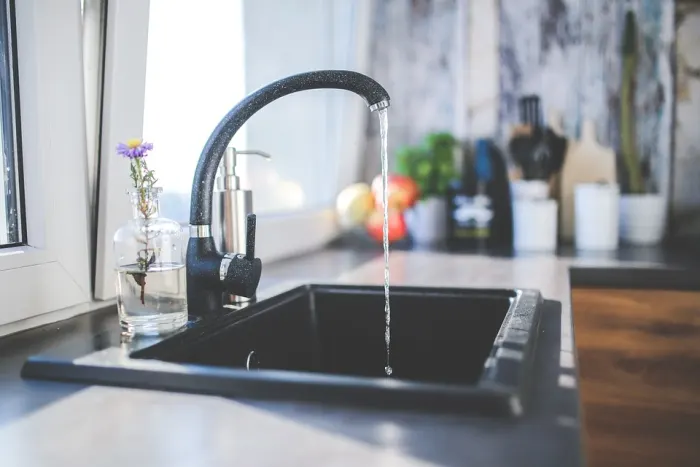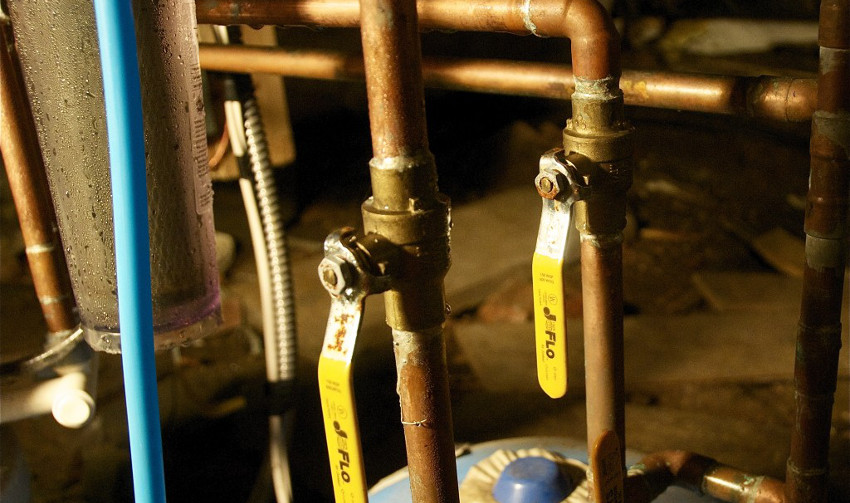Appliance Issues: When To Seek a Plumbing Professional's Help for Common Issues
Appliance Issues: When To Seek a Plumbing Professional's Help for Common Issues
Blog Article
How do you feel on the subject of How To Fix Noisy Pipes?

To identify loud plumbing, it is essential to identify first whether the unwanted audios take place on the system's inlet side-in various other words, when water is transformed on-or on the drainpipe side. Noises on the inlet side have varied reasons: too much water stress, used shutoff as well as faucet components, poorly linked pumps or other appliances, inaccurately put pipe fasteners, and also plumbing runs having way too many limited bends or other limitations. Sounds on the drainpipe side normally stem from inadequate area or, just like some inlet side noise, a layout containing limited bends.
Hissing
Hissing noise that occurs when a tap is opened somewhat typically signals excessive water stress. Consult your regional water company if you believe this problem; it will have the ability to tell you the water stress in your area and can mount a pressurereducing valve on the incoming water pipe if necessary.
Thudding
Thudding sound, typically accompanied by trembling pipelines, when a faucet or device valve is turned off is a problem called water hammer. The noise and also vibration are brought on by the reverberating wave of pressure in the water, which unexpectedly has no place to go. Often opening up a valve that releases water quickly into an area of piping containing a constraint, elbow, or tee installation can generate the same problem.
Water hammer can generally be cured by setting up installations called air chambers or shock absorbers in the plumbing to which the trouble valves or taps are attached. These gadgets permit the shock wave created by the halted flow of water to dissipate airborne they have, which (unlike water) is compressible.
Older plumbing systems might have short upright sections of capped pipeline behind walls on tap runs for the very same purpose; these can ultimately loaded with water, decreasing or damaging their efficiency. The treatment is to drain the water supply completely by turning off the main water system shutoff and opening up all taps. Then open the major supply valve as well as close the faucets one by one, beginning with the faucet nearest the valve and also finishing with the one farthest away.
Chattering or Shrieking
Extreme chattering or screeching that happens when a shutoff or tap is turned on, and that normally disappears when the fitting is opened fully, signals loosened or malfunctioning internal parts. The remedy is to change the valve or faucet with a brand-new one.
Pumps and also devices such as washing devices as well as dishwashing machines can move electric motor noise to pipes if they are incorrectly linked. Connect such items to plumbing with plastic or rubber hoses-never rigid pipe-to isolate them.
Various Other Inlet Side Noises
Squeaking, squeaking, scratching, snapping, and tapping normally are brought on by the expansion or contraction of pipelines, usually copper ones providing hot water. The sounds occur as the pipes slide against loosened bolts or strike neighboring residence framing. You can typically identify the place of the problem if the pipes are exposed; simply adhere to the noise when the pipes are making noise. More than likely you will certainly uncover a loosened pipeline hanger or an area where pipes exist so near to flooring joists or other framing items that they clatter versus them. Connecting foam pipe insulation around the pipes at the point of call need to treat the trouble. Make sure straps and wall mounts are safe and secure as well as supply appropriate support. Where possible, pipe bolts must be connected to huge architectural components such as foundation walls rather than to framing; doing so lessens the transmission of resonances from plumbing to surface areas that can magnify and move them. If connecting fasteners to framing is unavoidable, cover pipes with insulation or various other durable material where they speak to bolts, and sandwich completions of new bolts in between rubber washers when installing them.
Dealing with plumbing runs that experience flow-restricting tight or countless bends is a last hope that ought to be undertaken just after seeking advice from a competent plumbing contractor. Regrettably, this situation is rather common in older residences that may not have actually been built with interior plumbing or that have seen a number of remodels, especially by novices.
Drainpipe Sound
On the drain side of plumbing, the chief objectives are to get rid of surfaces that can be struck by dropping or rushing water as well as to insulate pipelines to have inevitable audios.
In brand-new construction, bathtubs, shower stalls, commodes, and wallmounted sinks as well as basins must be set on or against durable underlayments to lower the transmission of sound via them. Water-saving toilets and also faucets are much less loud than traditional versions; install them rather than older kinds even if codes in your area still allow making use of older fixtures.
Drainpipes that do not run up and down to the basement or that branch right into horizontal pipe runs supported at floor joists or various other framing existing particularly problematic noise troubles. Such pipes are big sufficient to emit significant vibration; they additionally carry significant quantities of water, that makes the situation worse. In brand-new building and construction, specify cast-iron dirt pipelines (the large pipes that drain bathrooms) if you can manage them. Their enormity contains much of the noise made by water going through them. Additionally, stay clear of routing drainpipes in walls shown rooms and rooms where people collect. Wall surfaces containing drainpipes ought to be soundproofed as was explained previously, using double panels of sound-insulating fiberboard as well as wallboard. Pipelines themselves can be covered with unique fiberglass insulation created the function; such pipelines have a resistant vinyl skin (in some cases including lead). Results are not always adequate.
WHY IS MY PLUMBING MAKING SO MUCH NOISE?
This noise indeed sounds like someone is banging a hammer against your pipes! It happens when a faucet is opened, allowed to run for a bit, then quickly shut — causing the rushing water to slam against the shut-off valve.
To remedy this, you’ll need to check and refill your air chamber. Air chambers are filled with — you guessed it — air and help absorb the shock of moving water (that comes to a sudden stop). Over time, these chambers can fill with water, making them less effective.
You’ll want to turn off your home’s water supply, then open ALL faucets (from the bathroom sink to outdoor hose bib) to drain your pipes. Then, turn the water back on and hopefully the noise stops! If you’re still hearing the sound, give us a call to examine further.
Whistles
Whistling sounds can be frustrating, as sometimes the source isn’t easily identified. However, if you can pinpoint which faucet or valve that may be the cause, you’ll likely encounter a worn gasket or washer — an easy fix if you replace the worn parts!Whistling sounds from elsewhere can mean a number of things — from high water pressure to mineral deposits. Your best plan of attack here is to give our plumbing experts a call. We’ll be able to determine where the noise is coming from and what the cause may be, then recommend an effective fix!
Cracks or Ticks
Cracking or ticking typically comes from hot water going through cold, copper pipes. This causes the copper to expand resulting in a cracking or ticking sound. Once the pipes stop expanding, the noise should stop as well.
Pro tip: you may want to lower the temperature of your water heater to see if that helps lessen the sound, or wrapping the pipe in insulation can also help muffle the noise.
Bangs
Bangs typically come from water pressure that’s too high. To test for high water pressure, get a pressure gauge and attach it to your faucet. Water pressure should be no higher than 80 psi (pounds per square inch) and also no lower than 40 psi. If you find a number greater than 80 psi, then you’ve found your problem!
Next step is to give us a call in order to install a pressure regulator. Trust us, you don’t want to wait to resolve this issue. Not only is the sound annoying, but high water pressure can be destructive to your home — including damaging certain appliances, like your washer and dishwasher.
Dripping
You might be accustom to the slow quiet drip your kitchen faucet makes. You might have even tuned out your bathroom sink dripping and drabbing all day long — but it’s time to find its cause.
A slow drip could signify a variety of easy to fix issues, such as a worn out O ring, or loose part. And by ignoring the drip, you could be wasting up to 2,000 gallons of water a year! So start conserving water — get it looked at ASAP.
https://www.pwessig.com/blog/2018/december/why-is-my-plumbing-making-so-much-noise-/

Do you appreciate reading up on How To Fix Noisy Pipes? Give a review below. We'd be delighted to listen to your feelings about this page. Hoping that you visit us again later on. Do you know another individual who is enthusiastic about Why Do My Plumbing Pipes Make A Knocking Noise? Feel free to share it. Thank you for your time. Come back soon.
Visit Site Report this page